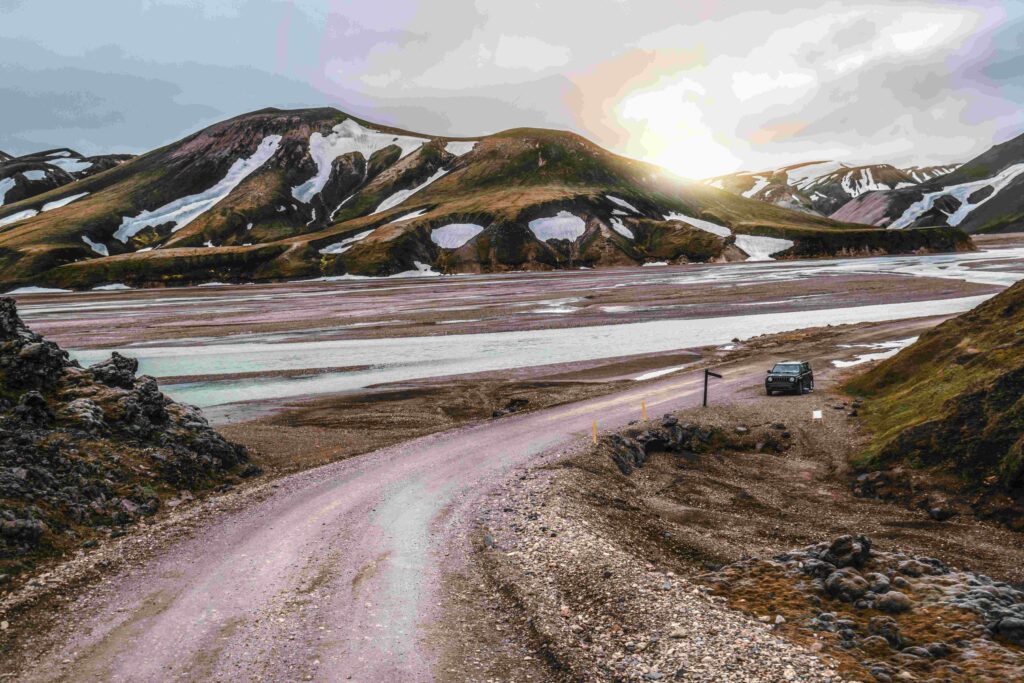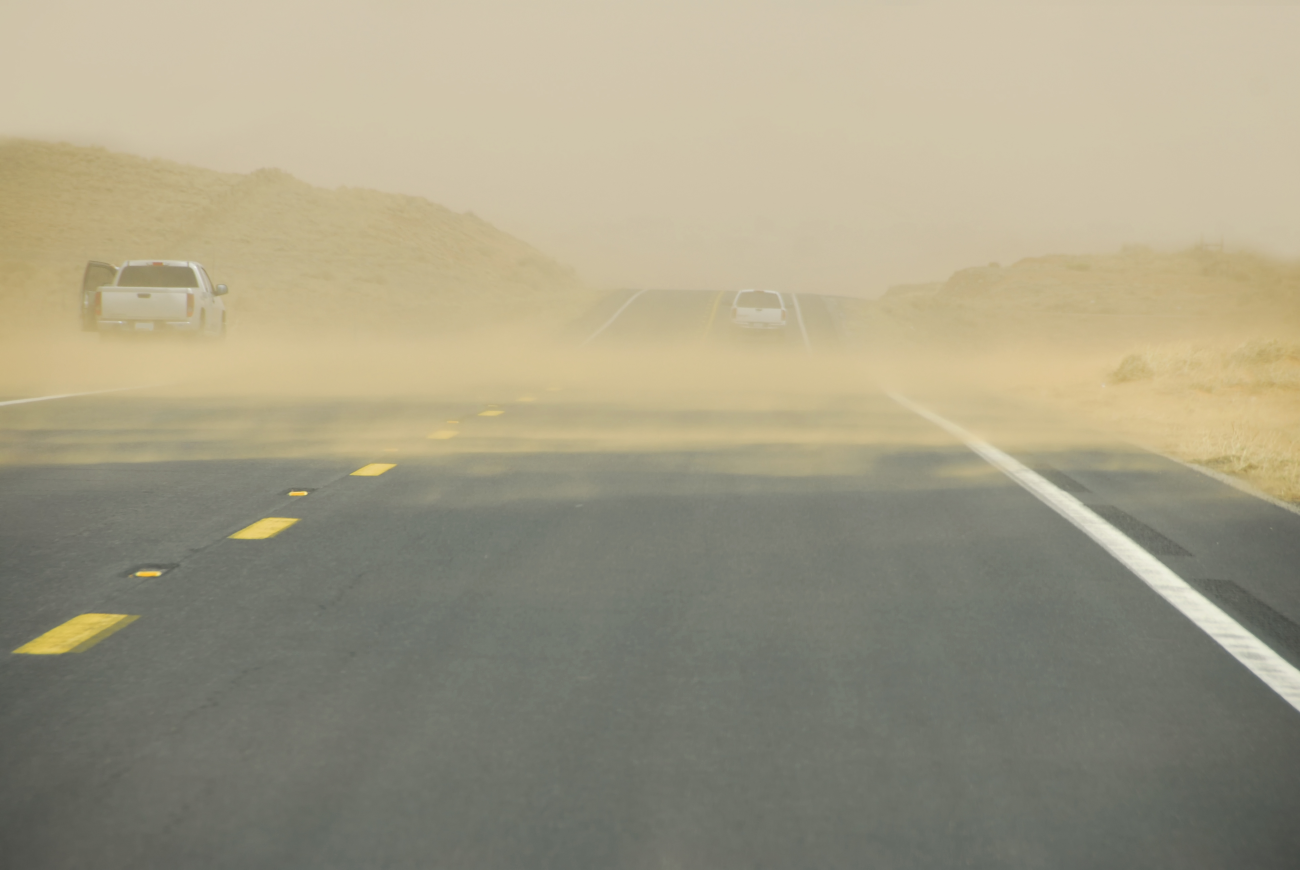Last updated: October 2025
Crossing rivers without bridges is one of the most thrilling yet dangerous parts of driving in Iceland’s highlands.
Even experienced drivers can misjudge the depth, current, or route — and a single mistake can flood your engine, stall your car, or cause expensive damage not covered by insurance.
Here’s everything you need to know before attempting an unbridged river crossing in Iceland.
Key Facts About River Crossings in Iceland
- Only 4×4 vehicles are allowed on F-roads where most unbridged rivers exist.
- Water should never exceed half the wheel height.
- Maintain a steady speed of around 4 km/h — slower is safer.
- Always walk the crossing first if possible to check depth and firmness.
- Never cross during floods, heavy rain, or strong currents.
- Insurance does not cover water damage caused by river crossings.
- Check Road.is for road closures and Vedur.is for weather warnings before you go.
- When in doubt — turn around. Iceland’s nature is unpredictable.

Q: What Are Unbridged River Crossings and Why Are They Risky?
Unbridged rivers are natural crossings without bridges, found mainly in the Icelandic Highlands on F-roads.
They vary daily — even hourly — depending on melting glaciers, rainfall, or volcanic runoff.
Risks include:
- Hydrolock (water entering the engine through the air intake)
- Electrical system failure
- Loss of traction or control in strong currents
- Being swept downstream
- Chassis or underbody damage from hidden rocks
Even shallow rivers can rise rapidly after rain or warm weather, making safe crossings impossible within minutes.
Q: When Should You Never Attempt a River Crossing?
Avoid crossing any unbridged river if:
- You’re driving a 2WD vehicle or one with low ground clearance
- Water level is above half your wheel height
- The current is strong, fast-moving, or turbid (brown and unclear)
- Rainfall or snowmelt has recently increased flow
- You’re driving alone without a second vehicle or spotter
- Visibility is poor due to fog, nightfall, or dust
- The exit bank looks soft, steep, or unstable
Remember: no photo or shortcut is worth the risk.
Q: How to Prepare Before Crossing an Unbridged River
- Engage 4WD (low range) before entering the river.
- Check water depth using a stick or by walking (only if safe).
- Observe other vehicles crossing — follow their line if safe.
- Ensure engine air intake is high enough for your vehicle.
- Remove loose items that could get wet inside the car.
- Unbuckle your seatbelt before entering the water (for emergency exit).
- Plan your exit path — it should be visible and stable.
Q: Safe Technique for Crossing Rivers in Iceland
Approach and Entry
- Approach slowly and directly — perpendicular to the current.
- Use a low, steady gear (first or second in low range).
- Do not accelerate suddenly; create a small bow wave ahead of the vehicle.
During the Crossing
- Maintain a constant slow speed (≈ 4 km/h).
- Avoid gear changes or sudden steering.
- Follow the shallowest visible line — usually downstream from the ford sign.
- Keep calm and steady — rushing increases your risk.
Exit
- Once the front wheels touch the opposite bank, keep throttle steady until you’re fully out.
- Don’t stop until you’re on solid ground.
- Dry your brakes by lightly pressing the pedal several times once out.
Q: Common Mistakes Drivers Make (and How to Avoid Them)
| Mistake | Consequence | Correct Approach |
|---|---|---|
| Entering too fast | Splash floods air intake | Maintain steady 4 km/h speed |
| Crossing at an angle | Car pushed sideways by current | Enter perpendicular to flow |
| Taking shortest route | Deepest section, hidden rocks | Choose longest but shallowest path |
| Changing gear mid-river | Loss of traction, stalling | Stay in one low gear |
| Crossing at night | Poor visibility of hazards | Always cross in daylight |
| Driving alone | No help if stuck | Travel with another car or turn back |
Q: River Crossing Safety Rules at a Glance
| Factor | Safe Limit | Risk When Exceeded | Mitigation |
|---|---|---|---|
| Water depth | ≤ 50% of wheel height | Engine flooding / hydrolock | Walk crossing first |
| Speed | ≤ 4 km/h | Splash over bonnet / intake | Maintain steady throttle |
| Current | Slow, clear flow | Sweeping / loss of control | Abort crossing |
| Riverbed | Rocky or firm | Soft sand or silt traps wheels | Probe bed before crossing |
| Angle | Perpendicular to current | Dragging, tipping | Straight line |
| Rain / meltwater | Dry or low flow | Rapid water rise | Wait or reroute |
Q: What to Do If Your Car Stalls Mid-River
- Do not try to restart — this can pull water into the engine.
- Exit safely if water rises quickly.
- Call 112 (emergency) or roadside assistance immediately.
- Do not open bonnet while water level is high — wait until safe.
- Document with photos and share details with your rental provider.
Restarting a waterlogged engine can cause irreversible hydrolock damage, which is not covered by insurance.
Q: What to Do After a River Crossing
- Inspect brakes and test them on dry ground.
- Check for leaks or water drips under the car.
- Clean air filter and undercarriage.
- Look for engine warning lights.
- If you suspect water entry, contact Thrifty immediately for assistance.
Water damage can worsen hours after crossing — early inspection helps avoid further problems.
Q: Is River Crossing Damage Covered by Insurance?
No — water damage from river crossings is not included in standard or premium coverage plans.
Even if the car is a 4×4, the driver is responsible for:
- Hydrolock or engine failure
- Electrical or gearbox water damage
- Towing and recovery costs
Only if you have specialised coverage (if available) could limited protection apply.
Always read your rental terms and avoid all unnecessary crossings.
Q: Real Example – Fording Gone Wrong
In 2023, several travelers misjudged the F210 near Mælifell, thinking it was shallow.
The water depth increased mid-way, leading to engine hydrolock and a repair cost exceeding 2.5 million ISK.
Lesson learned: even shallow crossings can hide deep drop-offs and fast currents.
If you’re unsure — don’t risk it.
Q: How to Plan Your Trip Around Unbridged Rivers
- Use Road.is to check if F-roads with river crossings are open.
- Visit Safetravel.is for live alerts.
- Check Vedur.is wind and rain forecasts daily.
- Ask locals or park rangers for advice before entering highland routes.
- Always travel with another 4×4 if planning remote routes.
Related Driving Guides
- F-Roads in Iceland: Mountain Road Rules
- Sand & Ash Storms in Iceland: Damage & Safety Tips
- Winter Driving in Iceland: Snow, Ice & 4×4 Advice
- Car Rental Insurance Explained
- Driving in Iceland: Safety Rules & Road Tips

Important Information
Driving in Iceland can be different than you are used to. Read now.

Recommended Read
F-roads in Iceland are only suitable for AWD and 4×4 rental cars. Read more.